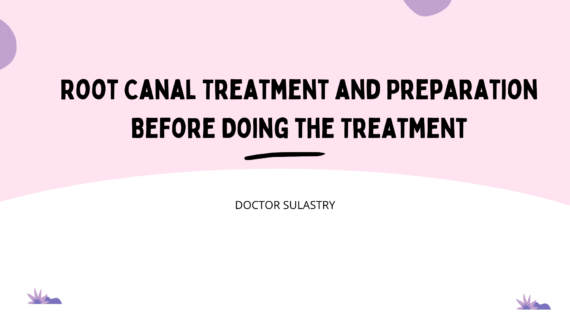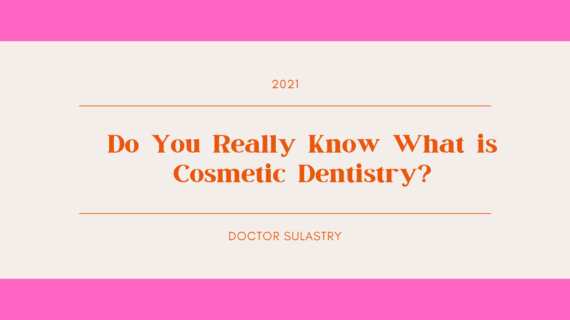Root canal treatment is a minor surgical procedure that is performed when the infection causing decay has already killed your tooth. This method of improving the condition of the teeth can also be called endodontic.
During root canal treatment, the dentist will remove the infected pulp and nerve fibers from the center of your tooth and fill the pulp cavity. This procedure can prevent infection in the pulp from spreading to other teeth.
The goal of dental treatment is to “preserve” decayed teeth, not bring them back to life. Root canal treatment is done because you want it or your doctor advises you to keep the salvageable dead tooth.
Therefore, you can still use your old tooth structure as usual. Without requiring the process of causing decayed teeth to then be fitted with teeth.
Also Read Other Benefits of Mouthwash Besides for Bad Breath
Is root canal treatment painful?
Did you know, the root canal procedure itself is painless. Root canal treatment is actually done to relieve your tooth pain. The dentist will first give an anesthetic or local anesthetic to numb the area around the damaged tooth.
The pain that arises actually comes from the infection in the decayed tooth, not from the procedure performed.
Then, your dentist will clean the bacteria and infection present in the tooth and root canal. To clean it, to do a tooth filling to prevent further infection. The side effects you may feel may only be discomfort in the mouth and swelling in the area around the teeth. But you don’t need to worry, because the side effects will heal by itself.
Even though it doesn’t hurt, it doesn’t mean you can just come without proper preparation. Because the root canal treatment process is generally carried out in 1 or even 3 visits to the dentist and takes a relatively long time.
For this reason, you need to prepare yourself in advance so that root canal treatment can run smoothly.
When do you need root canal treatment?
Early signs of infection of the pulp and nerve fibers of the tooth can be a sign that you need this treatment.
- Pain when consuming hot or cold food and drinks
- Pain when biting and chewing loose teeth
- Bacterial infections in teeth that are not detected as early as possible can cause new problems. One of them is dead teeth or rotten teeth which sometimes do not show any symptoms.
- Swollen gums around the infected tooth area
- Tooth abscess (pocket of pus)
- Swelling of the face
- Tooth discoloration becomes darker
Immediately go to the nearest dentist if you feel the symptoms as above. It is important to immediately consult and get proper treatment from a dentist. One of them is root canal treatment.
Preparation for the treatment
These are some things that you must prepare before doing root canal treatment.
- Talk to your doctor about your painkillers
If your tooth is already infected, any treatment can cause pain and discomfort in the mouth. Antibiotics may also be prescribed by a doctor. Because if you take antibiotics can also shorten your recovery time later. Medications prescribed by a doctor must be taken at the right time and at the right dose on a regular basis, unless you are instructed otherwise.
Also tell us what other medicines you are currently taking, whether they are prescription or non-prescription. In general, do not take aspirin for 10 days before treatment.
2. You should not smoke or drink alcohol first
You should avoid drinking alcoholic beverages at least 24 hours before your scheduled root canal treatment and 48 hours after it. Also avoid smoking 24 hours before and 72 hours after doing this treatment at the dentist.
Smoking and drinking alcohol can slow healing time and have the potential to cause complications.
3. Eat enough food
Ask your doctor further about what you can and can’t eat before and after root canal treatment.
If you’re just locally sedated, it’s fine to have your usual big meal before your scheduled time or at least a filling snack to keep your tummy going through the lengthy process.
If your mouth is numbed with a local anesthetic during this procedure, you may not be able to eat for several hours until the numbness goes away.
You will also need to eat soft foods and soups for the first few days of recovery.
Conclusion
Don’t wait until your teeth are damaged to go to the dentist. It’s a good idea to always have a regular consultation at least every 6 months to find out the condition of your teeth. You also can come to visit our clinic to do consultation, you don’t need to worry about the cost, because is not to expensive for 1 consultation
Upon returning from the doctor after undergoing root canal treatment, get plenty of rest and avoid strenuous physical activity. Keep your head higher than your heart when lying down.
Then do dental care according to the doctor’s recommendations, for example brushing your teeth properly and regularly, using a type of toothbrush with soft bristles, fluoride toothpaste, flossing, and using mouthwash.

